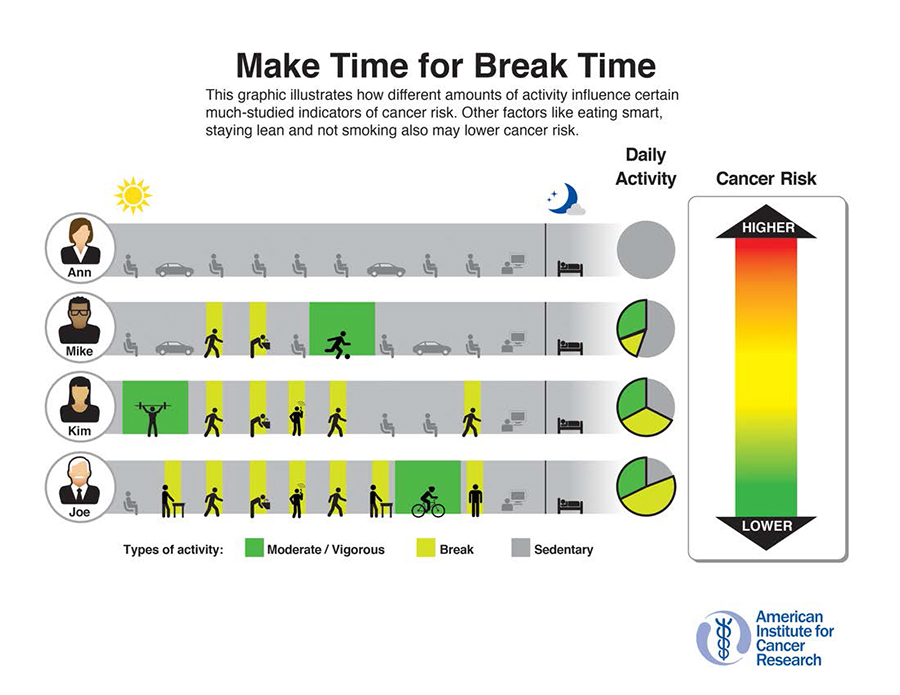Getting at least 30 minutes of exercise each day improves fitness and reduces your risk of chronic disease. But what you do the other 23½ hours also can affect your health. Even though you’re getting the minimum amount of exercise, you’re at risk of “sitting disease” if the rest of your day is spent doing sedentary activities such as sitting or sleeping. You’re still at risk of heart disease, diabetes, and other illnesses too. But there are ways to move more throughout your day.
The sedentary lifestyle
For many, a typical day is spent sitting or otherwise sedentary—whether you’re at your desk, in the car, at the dinner table, on the couch, or in bed. All this sedentary time puts you at greater risk of chronic diseases, including heart disease, diabetes, high blood pressure, and even cancer. The simple act of standing up has more physiological benefits compared to sitting. The “active couch potato” phenomenon shows that even people who are relatively fit and meet the minimum requirements for daily exercise still exhibit risk factors for metabolic syndrome and other chronic diseases as sitting time increases.
Sure, you might take the dog out for its morning walk, or maybe you did PT before work. Still, the more time you spend sitting the rest of the day, the greater your risk of disease. According to this infographic from the American Institute for Cancer Research, even those who engage in moderate amounts of exercise and physical activity are still at risk of cancer if they also spend 12 or more hours of their day seated or lying down.
Workplace workout
Time is often a major reason that people say they don’t get enough exercise or physical activity during their day. It’s true that work can get busy, but just a little creativity can turn it into a productive and physically active workday. More research is needed to determine exactly how much exercise offsets or reduces your risk from sitting, but in the meanwhile, try these tips to help reduce your sedentary time:
- Bike or walk to work, if possible. If you don’t live close enough to bike or walk the entire distance, try walking at least part of your commute. For example, park further from your building. Or choose a higher level in the parking garage.
- Take walking breaks. Walk to a coworker’s office instead of calling or emailing. Suggest a walking meeting next time you and coworkers schedule a get-together. Walk to a cafeteria, park, or nearby bench before eating lunch. Experts suggest that even 2 minutes of walking per hour can be beneficial, so set your timer and go.
- Take the stairs. The more you climb, the easier it will get. Walk up and down escalators too instead of riding. Avoid elevators as much as possible.
- Take small standing breaks. When your phone rings, you could stand up to answer it and remain standing during the call. When someone visits your workspace, stand during your conversation. Or consider switching to a standing desk in your office.
- Use an activity tracker. Wearable technology can help remind you to stay active and keep moving.
Doing whatever you can to increase the amount of time you spend standing, exercising, and being physically active will improve your chances of a longer and healthier life.

